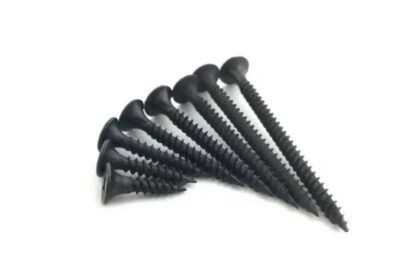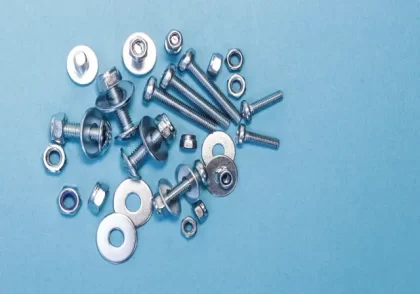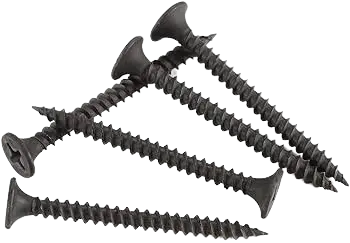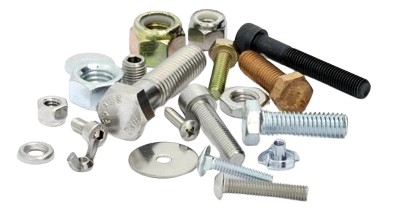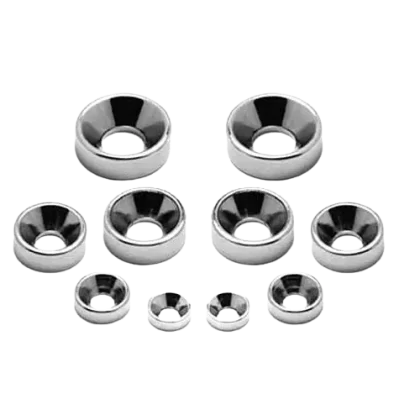Top Fastener Standards in the World
Let's Explore the Top Fastener Standards in the World
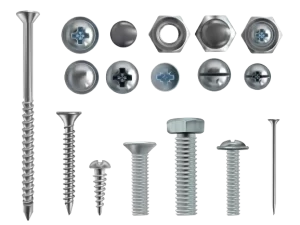
Why Fasteners Matter
Imagine a world without screws, nuts, bolts, and rivets. Buildings would crumble, furniture would fall apart, and even your trusty smartphone might fall victim to gravity. These unassuming heroes, often hidden from view, play a crucial role in holding our world together, both literally and figuratively. From towering skyscrapers to the intricate workings of a watch, fasteners ensure crucial connections, enabling smooth functionality and safety.
But for these tiny titans to work their magic, a global language of standards is essential. Enter the fascinating world of fastener standards, a complex yet vital system that brings order to the vast and diverse universe of screws and bolts.
Why We Need Fastener Standards ?
Just like languages allow us to communicate, fastener standards establish a common ground for engineers and manufacturers across the globe. Imagine a world where every company used their own unique screwhead design, thread pattern, and material specifications. Chaos would ensue! Parts wouldn't fit together, safety would be compromised, and global trade would grind to a halt. This is where standards come in, acting as the Rosetta Stone for the fastener industry. They ensure:
Interchangeability: A screw made in France should seamlessly fit into a nut made in Japan. Standards make this possible.
Predictability: Engineers can rely on fasteners to perform consistently, knowing their exact strength, dimensions, and behavior.
Consistency: Global trade thrives on consistency. Standards ensure that a bolt bought in China meets the same specifications as one bought in the US.
The Global Guardians of Fasteners
Several prominent organizations wield the power of fastener standards across the globe. Let's meet some of the key players:
International Organization for Standardization (ISO):
 The undisputed heavyweight, ISO boasts the most widely used standards globally. Their ISO 898-1 governs metric fasteners, while ISO 4014 and ISO 4017 cover nuts and screws, respectively. Think of them as the universal language of fasteners.
The undisputed heavyweight, ISO boasts the most widely used standards globally. Their ISO 898-1 governs metric fasteners, while ISO 4014 and ISO 4017 cover nuts and screws, respectively. Think of them as the universal language of fasteners.
American Society of Mechanical Engineers (ASME):
 Catering to the specific needs of industries like power generation and chemical processing, ASME standards are renowned for their focus on safety and precision. Their ASME B16.5 for pipe flanges and ASME B18.2.1 for square and hex nuts are industry staples.
Catering to the specific needs of industries like power generation and chemical processing, ASME standards are renowned for their focus on safety and precision. Their ASME B16.5 for pipe flanges and ASME B18.2.1 for square and hex nuts are industry staples.
Society of Automotive Engineers (SAE):
 Geared towards keeping our vehicles running smoothly, SAE standards dictate the nuts and bolts that make up the backbone of cars, trucks, and airplanes. The SAE J429 series for bolts and SAE J995 for nuts are essential references for mechanics and car manufacturers alike.
Geared towards keeping our vehicles running smoothly, SAE standards dictate the nuts and bolts that make up the backbone of cars, trucks, and airplanes. The SAE J429 series for bolts and SAE J995 for nuts are essential references for mechanics and car manufacturers alike.
Deutsche Institut für Normung (DIN):

Precision engineering is the name of the game for DIN, the German standard-setting body. Their DIN 933 for hex bolts and DIN 7991 for nuts are widely used in Europe and beyond, known for their meticulous specifications.
Beyond the Big Names: A World of Standards


These are just a few of the organizations shaping the landscape of fastener standards. Regional and national bodies also play a crucial role, catering to specific needs and regulations. For instance, the Indian Standards Bureau (BIS) and the Japanese Industrial Standards (JIS) hold significant influence in their respective regions.
A Universe of Specifications: What Standards Cover
Fastener standards are not one-size-fits-all. They are crafted to different materials, applications, and industries. From the high-strength alloys used in aerospace to the corrosion-resistant fasteners for marine environments, each scenario demands a specific set of criteria. Some key aspects covered by standards include:
Dimensions: Precise specifications for head shape, thread pattern, and shank size ensure perfect fit and interchangeability. Imagine trying to put a square peg in a round hole – standards prevent that!
Material: The right material is crucial for ensuring strength, durability, and resistance to corrosion. Stainless steel for marine applications, high-strength alloys for aerospace, and heat-resistant materials for engines – standards dictate the perfect fit for each job.
Mechanical properties: Tensile strength, yield strength, and fatigue resistance all determine the fastener's ability to handle various loads and stresses. Think of a bridge – the fasteners holding it together need to be incredibly strong!
Coatings and finishes: Protective coatings like zinc or electroless nickel can prevent corrosion and improve aesthetics. Imagine a rusty bolt on a beautiful bridge – not a good look! Standards ensure fasteners stay shiny and functional.
Why Fastener Standards Matter?
The benefits of standardized fasteners extend far beyond mere convenience. They are the silent heroes behind:
Safety: By guaranteeing consistent quality and performance, standards prevent failures that could compromise safety in critical applications. Imagine a plane falling apart mid-flight because of a faulty bolt – standards put safeguards in place to prevent such disasters.
Efficiency: Standardized parts mean less downtime and easier maintenance, boosting productivity across industries. Engineers don't need to waste time searching for compatible parts or figuring out obscure specifications – standards streamline the process, saving time and money.
Trade and globalization: Common standards remove technical barriers, facilitating seamless international trade in machinery and equipment. Imagine trying to import a car with incompatible fasteners – standards make global trade smooth and efficient.
Innovation: By providing a stable foundation, standards allow manufacturers to focus on developing new and improved fasteners for emerging technologies. Instead of reinventing the wheel every time, companies can build upon existing standards to push the boundaries of fastener design and functionality.
The Future of Fasteners: Embracing Change and Innovation
As technology advances and materials evolve, the world of fastener standards is constantly adapting. Sustainability is becoming a key focus, with standards for eco-friendly materials and manufacturing processes gaining traction. Imagine fasteners made from recycled materials or using less energy to produce – standards pave the way for a greener future.
Additionally, the integration of digital technologies like smart fasteners and automated assembly lines is pushing the boundaries of what's possible. Imagine fasteners that can monitor their own health and report potential issues before they become critical failures – standards can help integrate these advancements into the existing framework.
Conclusion: Tiny Heroes, Big Impact
The humble fastener, often invisible yet irreplaceable, is a testament to the power of standardization. By setting a common language for these tiny titans, fastener standards ensure safety, efficiency, and progress across the globe. So, the next time you tighten a screw or admire a towering structure, remember the unseen heroes – the fastener standards – that hold it all together.
For more information on this blog or to learn more about fasteners, feel free to contact us. Termscript Fasteners, as leading fasteners manufacturers in Pune, our dedicated team is ready to guide you.
